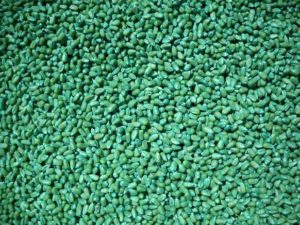In the last 12 months ... Bio-engineering has set its sights on ammonia. If we could deliver ammonia-emitting microbes to the soil we might make ammonia fertilizer obsolete; on the other hand, if we could farm them, we might establish ammonia as a new, carbon-free algal biofuel.
Content Related to De La Salle University
Bio-Ammonia for fertilizer or fuel (a tale of two bacteria)
Today, we saw probably the single most important announcement in the five years that I've been tracking sustainable ammonia production technologies. Global ag-input giant Bayer and MIT-spin off Ginkgo Bioworks ("we design custom microbes") announced a USD $100 million investment to engineer nitrogen-fixing bacteria into seed coatings, potentially displacing ammonia from its fertilizer market. On the other side of the world, in the Philippines, researchers are developing another use for another bacteria: industrial-scale algal ammonia synthesis. This would allow ammonia to become a carbon-free biofuel, creating a new and much, much, much bigger market for ammonia: no longer fertilizer but energy.
Optimizing technology pathways for Ammonia Fuel: production, transportation, and use
A paper has just been published by researchers in The Philippines who set out to determine the most environmentally benign way to produce, transport, and use ammonia as a fuel for vehicles. This new work provides a detailed life cycle analysis of a broad range of ammonia technologies, evaluating both carbon and nitrogen footprints of each, and identifying the optimal "well-to-wheel" pathway. Their results support the idea that using ammonia for energy presents a safe and sustainable way to bring about the hydrogen economy.


